Steve McCurry - The Beauty of Imperfection by Hannah Starman
The following article was written by Hannah Starman and published in the Swiss arts magazine Arteez1 as a Portrait of the Month in July 2021. It is reproduced here with permission.©
The article features an interview conducted by Hannah Starman with world famous photographer Steve McCurry.
Steve McCurry has been one of the most accomplished photographers for the past forty years, telling visual stories of war and conflict, ancient and contemporary cultures, beautifully imperfect landscapes and striking portraits.
His iconic photograph of the Afghan girl with piercing green eyes appeared on the June 1985 cover of National Geographic and became one of the most recognizable photographic portraits ever taken.
McCurry won numerous prestigious international awards, including the London Royal Photographic Society's Centenary Medal for Lifetime Achievement, Robert Capa gold medal, National Press Photographers Award and four World Press Photo first prize awards.
On the occasion of the exhibition Steve McCurry & Barbier-Mueller Museum. W abi-sabi, Beauty in Imperfection, presented at the Barbier-Mueller Museum in Geneva 2, the photographer answered our questions about portrait photography, the Afghan girl, his current show and the beauty of imperfection.
Hannah Starman for Arteez: I recently interviewed the curator of an exhibition of drawings devoted to portrait and self-portrait, Frédéric Pajak, and he said: “A portrait grabs us. You cannot do this with a photograph. A photograph only captures an instant, whereas a drawing allows you to appropriate the face of the other and make it your own.” (“Portrait, Self-portrait”).
How would you as the world's most accomplished portrait photographer respond to this observation?
Steve McCurry (SMC): A photograph can reveal a lot about an individual. I would take the exact opposite position on that. I would say that you can get a much more accurate view of someone's personality with that instant photograph. If you are painting or drawing a subject, you can go any in any direction you want. You can exaggerate something, you can interpret it in your own way. A photograph will reveal more accurately a person's personality. It's a surprising assertion. I don't agree with it at all.
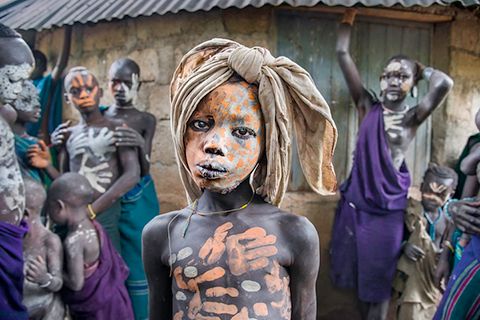
Hannah: How do you establish a rapport with your subjects and how do the portraits reflect this relationship?
SMC: It's depends on how you respond to a situation and how long you spend with somebody. These things can happen fairly quickly. You don't necessarily need to wait very long. Each encounter is different. Sometimes it takes just a few seconds. You see something and you capture it. Other times it takes a bit longer for the person to reveal their personality. If you are observant and you can work quickly, if you have a keen sense of observation and a keen sense of timing, you can obtain interesting results.
Do you know most of the stories behind your pictures? Do you take notes about the people that you photograph?
SMC: It's sometimes hard to remember details about photographs that I took thirty or forty years ago. If you take photos every day, it's difficult to remember the circumstances of each encounter. I try to take notes, but sometimes I don't speak the language and sometimes I just don't have the time to do that.
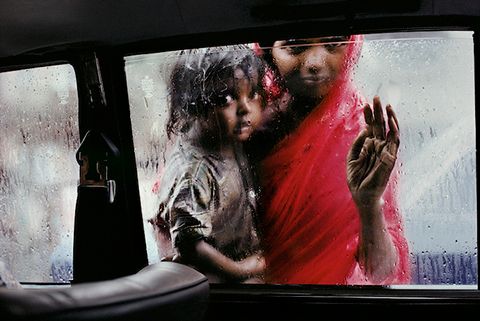
Hannah: You did a book on LGBT in Thailand. An intriguing subject.
SMC: My first trip to Thailand was in 1979 and I've been going there for years. I was offered this project and I thought that it would be really interesting to explore and spend time on something which I perhaps normally wouldn't really delve into. It was fascinating.
Are there pictures that you couldn't or wouldn't take or does the urge to tell the story always prevail?
SMC: It's on case by case basis. You have to respect people and not impose yourself, disturb or upset them. Sometimes you want to step aside and let people have their privacy. If you are in a war zone or an area of conflict or in a hospital or in a presence of tragedy or a problem, you have to assess the situation from moment to moment and try to put yourself in their position. Sometimes people want to be photographed in situations like these and sometimes not. You have to use your judgment and try and not be disrespectful.
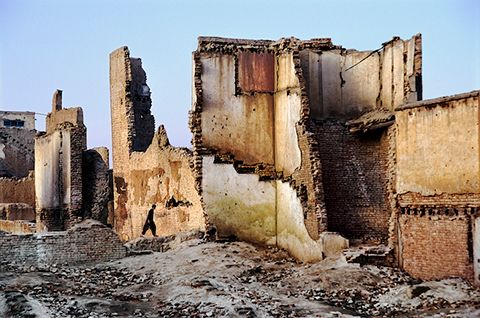
Hannah: Sharbat Gula, the Afghan girl with green eyes that made the cover of the National Geographic, made you famous. You went back to look for her. Do you keep in touch with other subjects or is she an exception?
SMC: It's not that often that you keep in touch. You are in these places and sometimes you go back and revisit places, but it's rare. I used to give people that I photographed polaroid pictures, but now it's more likely that I will email or text them an image, or send it by post. Sometimes it's not possible to meet people again because it was a chance encounter.
You have taken hundreds of portraits of people, oftentimes in war-torn zones and world's poorest countries. Do you ever feel that you need to give something back to the people that you have photographed?
SMC: Yes, I do want to do whatever I can for the people whom I photograph. Over the years I have tried to help as much as I can, but prefer to keep it confidential, for obvious reasons. I have stipulated for some of the corporate work that I have done, that we include donations for local charities and schools to ensure that we express our gratitude for the hospitality shown to us.
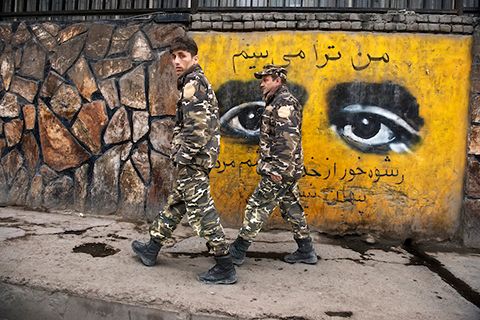
Hannah: Tell us about your humanitarian work.
SMC: I have a foundation, ImagineAsia , that provides photography training to young Afghani girls. It gives them access to creative experience and the possibility to deploy it within their families and communities. The idea is that everybody should have an opportunity. I also give a lot of donations to charities and we often put pictures up for charity auctions.
Have you ever been criticized for beautifying misery and war, like Sebastiao Salgado with his series on famine?
SMC: I was just thinking about my career and my photographs and trying to imagine what could actually be considered beautifying a disaster or whatever. I think you just you want to tell a story about a place or a situation, and do it in your own way. I don't think Sebastio would intentionally go in to beautify famine. There are always people who want to criticize, I suppose it comes with the territory.
Take the image of the striking Afghan girl with those amazing green eyes that we discussed earlier. Some may reproach you that the beauty of the image distracts viewers from the fact that she was a poor refugee fleeing a war zone and that she had endured loss and misery.
SMC: I get that and I understand that it's a striking picture, but the reality is that I was in this tent and photographing very quickly. I shot what was in front of me. I think that people always want to criticize and belittle. There is a criticism along the lines “what right does a white person from the West have to come over and photograph the people from Afghanistan when that story might have been better told, perhaps by an Afghan photographer who's coming from that same culture”.
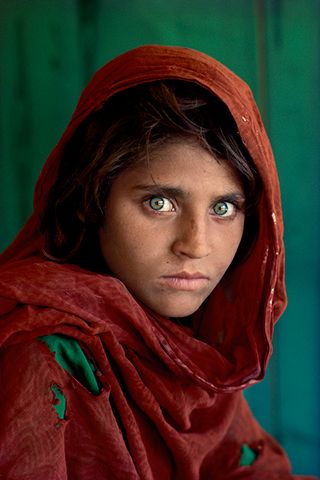
But that is why you are training the Afghan girls to be able to express themselves, right?
SMC: I sometimes hear “ he photographed her, but he has never compensated her for the picture .” I'm always amused by that because sometimes people, reporters, writers, etc. don't want to take the time to actually research things. It's easier and more fun to just throw these bombs at me. But if they had taken the time to research it, they would find out that we had helped Sharbat Gula for many years with all sorts of assistance and bought her a house.
And she wasn't even aware that she was famous when you found her almost twenty years later. Is that correct?
SMC: Yes. This was a time when the Soviet Union and the Afghani government were systematically destroying tens of thousands of Afghan villages and the Afghan people were desperate for help from wherever it came from, humanitarian help. They wanted to fight back. They were grateful for the attention of the people who wanted to actually do something to help them.
You have reached the level of accomplishment that gives you total freedom in choosing your projects. What attracted you to the collaboration with Barbier-Mueller Museum in Geneva?
SMC: I've always been fascinated with the concept of Wabi-sabi, of beauty in its irregular nature. Finding beauty and being intrigued by sometimes a particular object that has a certain character of beauty or depth or some imperfection that tells a story has always captivated me. I find it endlessly fascinating how nature could create this sort of beauty, something that tells us an incredible story. I walk down the street and look at a wall or a piece of furniture or a crack in the sidewalk or some of these Zen Buddhist temples in Japan that have this wonderful design and natural shapes. This was what intrigued me about the project. I work with a colleague in Italy and I believe that she had visited the museum and they started the discussions. That's how it unfolded.
The Museum director, Laurence Mattet, told me that you had sent in thirty photography for the exhibition. Did you also give instructions as to how to pair them with objects?
SMC: It was a collaboration. I did research and looked through their objects in the collection. I felt that they needed to have creative input and go in the directions that they thought were interesting. They had a lot of freedom and they also took my input into consideration. They did an excellent job.
The Barbier-Mueller Museum finally opted for an association that is based on color and form, rather than geography, for example. Do you feel that this was a good choice?
SMC: Yes, I do. There are very clever juxtapositions with the shapes of the objects and the color and the design of the pieces and how they communicate. I thought it was really wonderful that they became something extra, something more. There is an added value to the photograph and to the object. I thought it was very clever, very ingenious, the way they play against each other.
For example, the tower in Karelia, Russia, paired with a rather phallic head ornament.
SMC: We were riding around this village one afternoon and I just saw on the side of the road. I was fascinated by this tower where they kept grain or something, but the top had this funny little tilt. It was fascinating. When you see the ravages of time, how, due to decay or some sort of structural problem, it took this funny shape. It's this tall, elegant tower, but with a twist. I found it amusing.
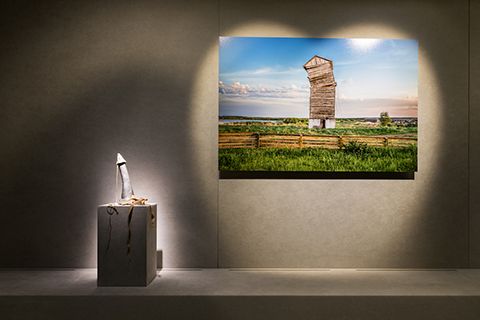
Hannah: You travel so much. Has Covid changed the way you work?
SMC: I have been traveling for forty years. During Covid, I have spent a lot of time working on my archives. I had been neglecting them for twenty years, so that has been a great, serendipitous, turn of events. I was able to finish two books during Covid. In Search of Elsewhere came out in November and I started working on a book on children, which will be coming out this fall. I also moved my studio and my apartment from New York to Philadelphia. I've been extremely busy and the only trip I took over the past 14 months was to Italy. You need to sit and evaluate and contemplate your work and your life. I have a four-year old daughter. Working at home has allowed me to spend more time with her and be kind of a more normal sort of at-home-dad as opposed to being away all the time.
What's next?
SMC: I have a number of projects. I'm going back to Italy for some work. I'll do another book, but I'm essentially waiting for the world to reopen. This work on my archives is a monumental task. I'm really trying to get that organized. I'm quite happy just working on that for the time being.
The Wabi-sabi exhibition has been very popular. Do you plan to visit it?
SMC: I heard that American citizens are not allowed to travel to Switzerland because of Covid. Traveling to the UK, Japan, Australia and India has been very complicated. I was in Italy a couple of weeks ago and I tried to get into Switzerland, but I was told that it wasn't possible. I would love to come. They really were very meticulous in trying to get the exhibition done in the best possible way. I'm glad to hear it's been popular. That's great. I'm very honored. Again, I thought it was done in a really careful, methodical way. They took the time to get it right.
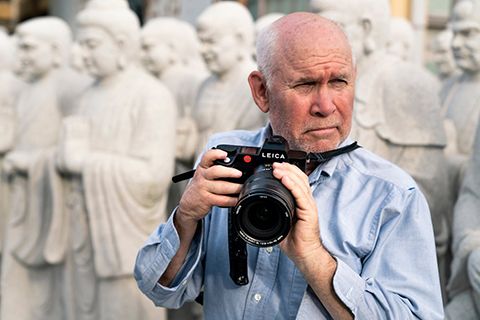
You can check out the website for Steve McCurry by clicking here.
The Wabi-sabi exhibition has closed but if you would like to look at the website for the Barbier Mueller Museum please click here.
© A very special thank you to Hannah Starman and the editor of the Swiss art magazine Arteez who have given their permission for the article to be reproduced here on the AnArt4Life blog.
Please follow this link to read more art articles on the ARTEEZ website.
Credit and Footnote
1. arteez.ch
2. The exhibition concluded 23 August 2021
